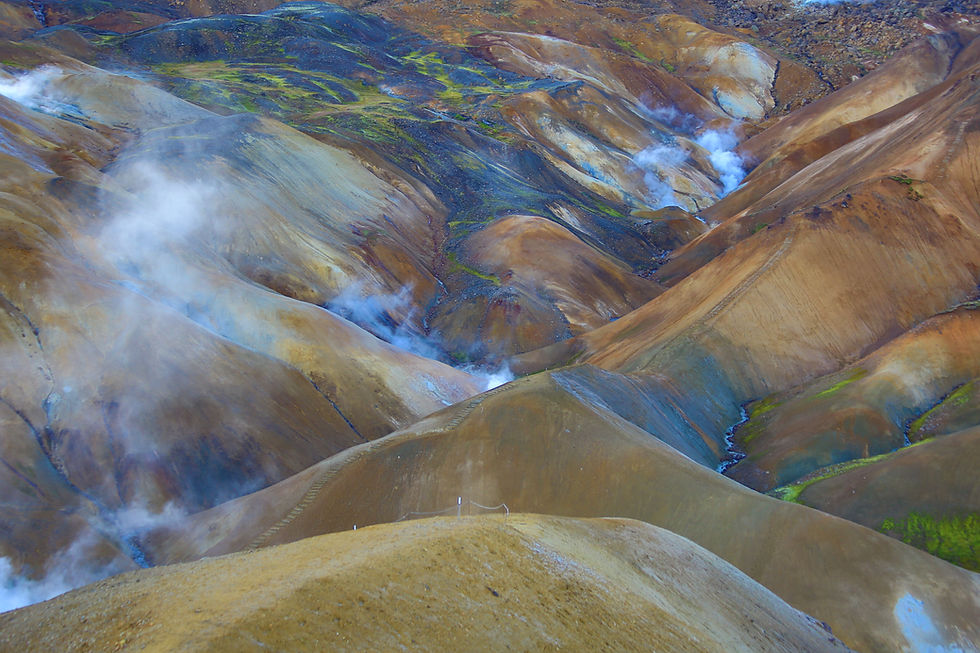Waimano Ridge Trail, Pearl City, Oahu, Hawaii
- May 3, 2018
- 3 min read
Updated: Jan 3, 2023
At the end of Waimano Home Road is the start of the official Waimano Ridge Trail. Located at the end of this road, Waimano Home was once an institution that housed the mentally ill and epileptic patients in the 1920's. Waimano - meaning Many Waters - is a lush verdant valley with a high precipitation rate. During the height of the sugar cane industry, Honolulu Plantation Company (HPC) built a series of ditches and tunnels to divert water from the Koolaus to the plantation fields along the mauka side of Pearl City. In 1913, the Waimano Ditch delivered 469 million gallons of water to the newly planted fields. The initial 1.2 mile trail was used to service these tunnels and dam. By 1934, territorial forester Charles S. Judd and the Civilian Conservation Corps (CCC) extended the initial ditch trail (naming it Waimano Trail) from a dam to the top of the Koolau summit. The extended ditch trail entails another 4.5 miles. Some parts of the trail had to be created by blasting away rock cliffs to clear the way for the crew. Finally, in 1935, the Waimano Trail stretched 5.7 miles and required 5,552 man days to complete.

Today, the 14.4 mile return trip Waimano Ridge Trail is maintained by the state's Na Ala Hele. It starts out from the end of Waimano Home Road at the hunters check in station, and traverses a long fence that finally turns into the reserve with a view towards Pearl Harbor and the Waianae range.

The first section, about 2.8 miles to the Boy Scout of America (BSA) shelter of this long trail takes one through the old tunnels and ditches of yesteryear. I was told that the ditch trail contained some 15 man made tunnels. We lost count after number 12! They all come in different lengths and sizes, with the longest one being tunnel #9; after dropping down a feeder stream for the first time and taking the left fork. Both forks will eventually join back up at the BSA shelter on an open grassy patch to complete the Waimano Tunnels Loop.

This is a good spot to have a picnic before turning back or to take a short break before continuing on. The next 4.5 miles starts a new section of the ridge hike. There will be several more tunnels that are less visible along the way. After dropping down into Waimano stream, there will be a series of switchbacks that start to gain elevation. This area is a beautiful respite featuring many giant fan palms, huge stands of royal palm trees, ornamental ki, great koas, and steep drop offs to the stream below. It also houses many endemic and foreign birds alike. It was very tempting to keep stopping to photographs of the many native fauna and flora but with this lackadaisical attitude, we doubt we could complete this hike before sundown!


About 5.1 miles into the hike, the trail finally opens up into a real ridge hike. This section had copious amount of koa trees lining both sides of the ridge top.

From here henceforth, the trail started to get narrower and gnarlier as we entered the fern section. Depending on the trail conditions, the final 2.1 miles can get very muddy and overgrown. This is also where it gets really misty and rainy if the weather should turn for the worst. Here you will find ohia, ki, ti and ko'li'i growing in abundance. We spotted the rare yellow and orange ohia lehua. The switchbacks never seem to end as we continue to gain more elevation through thick mud and vegetation.


Persistence finally paid off as we broke through the misty and uluhe covered section into a small grassy patch on the edge of the Koolau summit cliff. The view was breathtaking, not to mention we were partially soaked in the mist and the Koolau mud. I highly recommend wearing pants and a long sleeve shirt unless you want to get scratched up.


All in all, this 14.4 mile trek to the top of the Koolau range and back is a walk back into the past when sugar cane was still king of the island, a fleeting moment as we experienced the lush verdant valley and its surroundings, and we hope we can keep this treasure for our future generations to come.







Comments